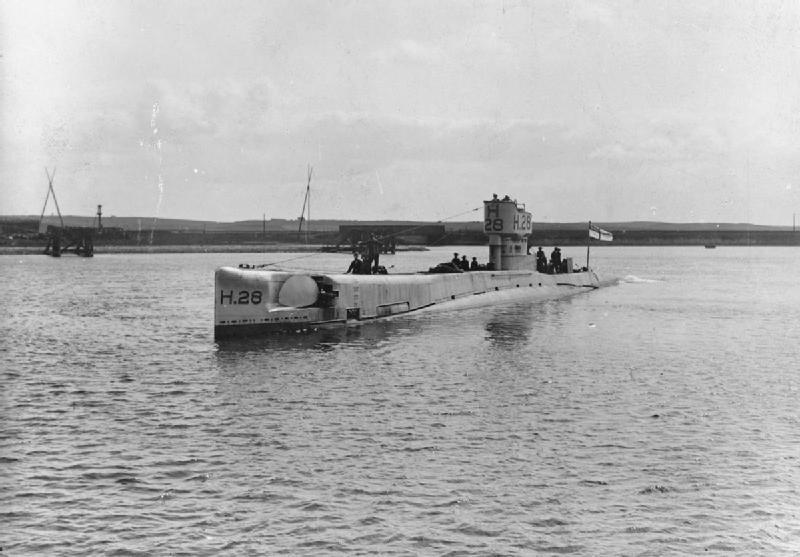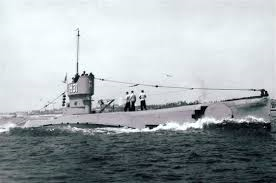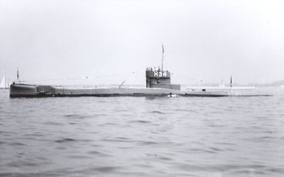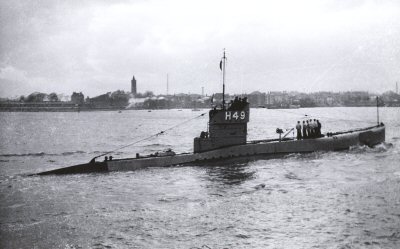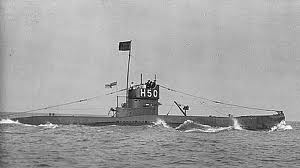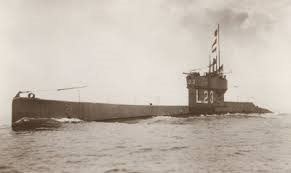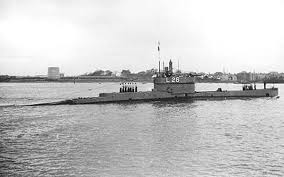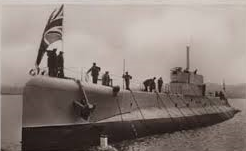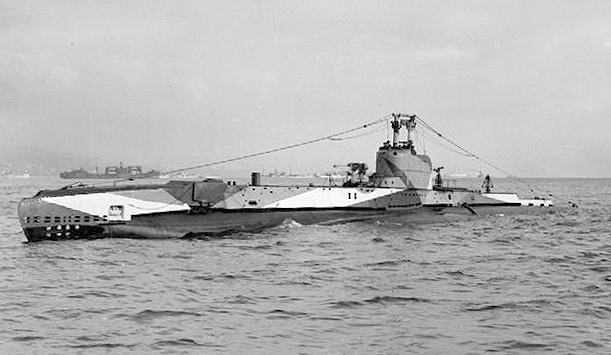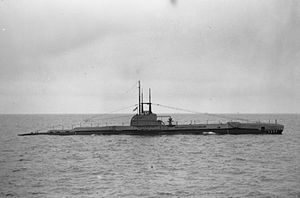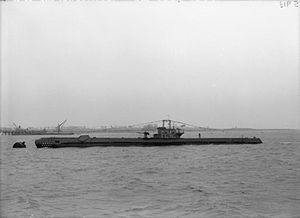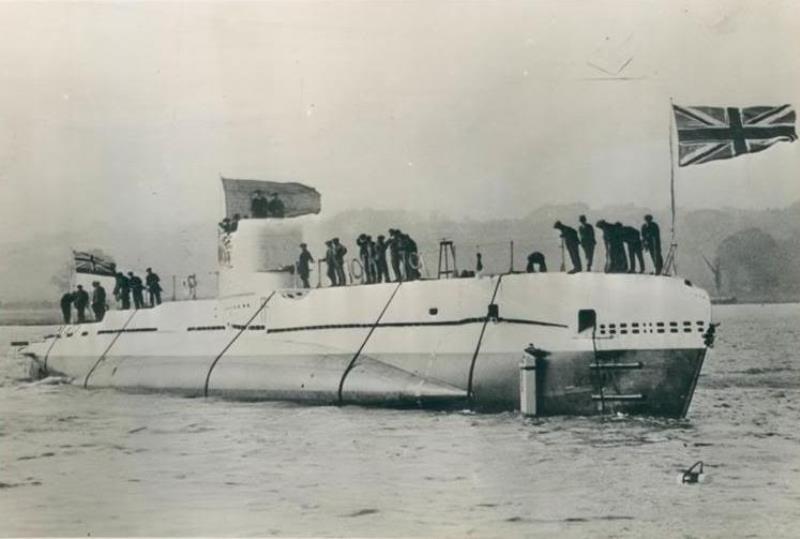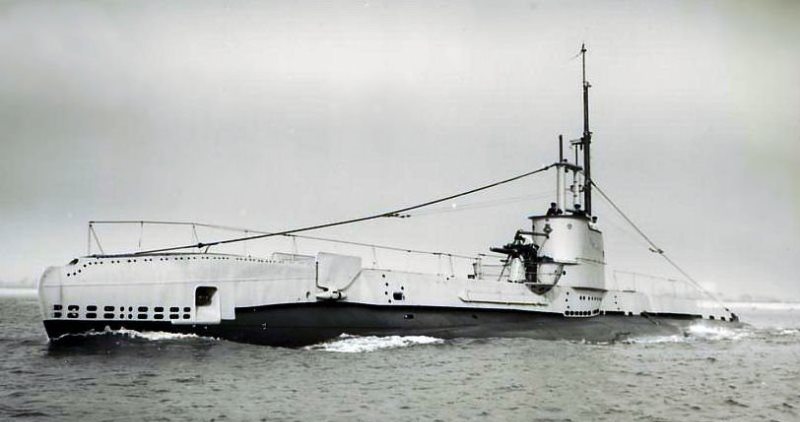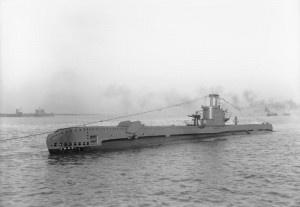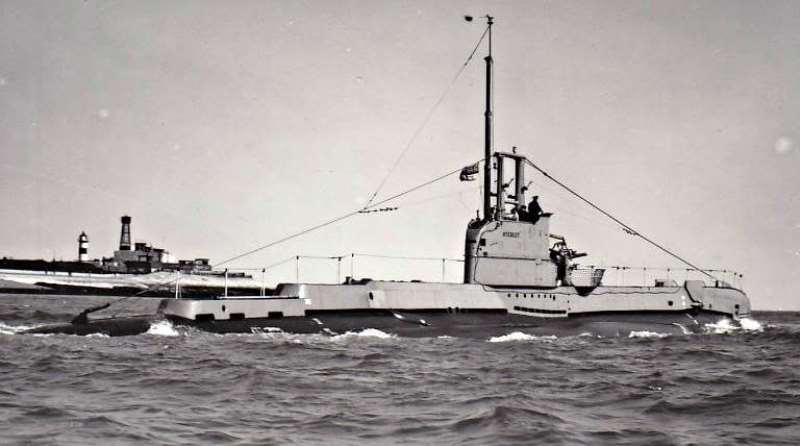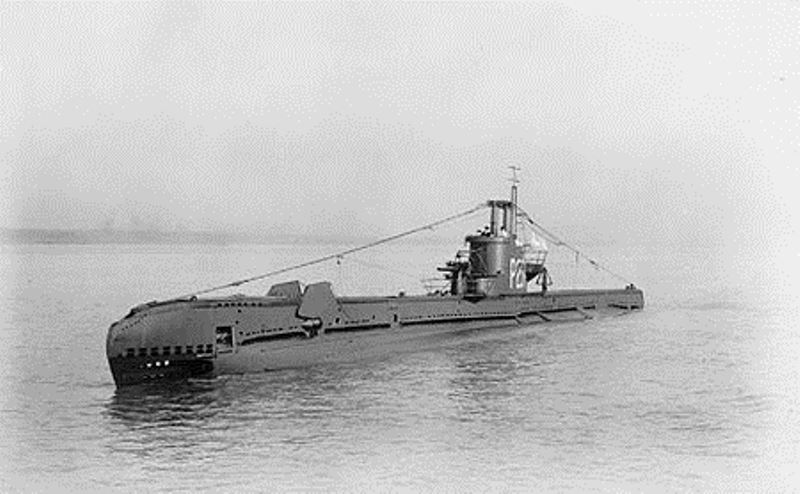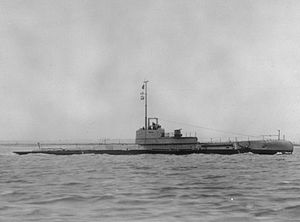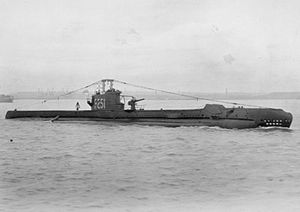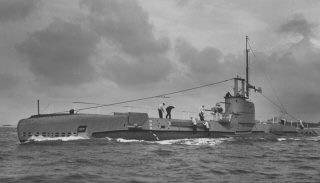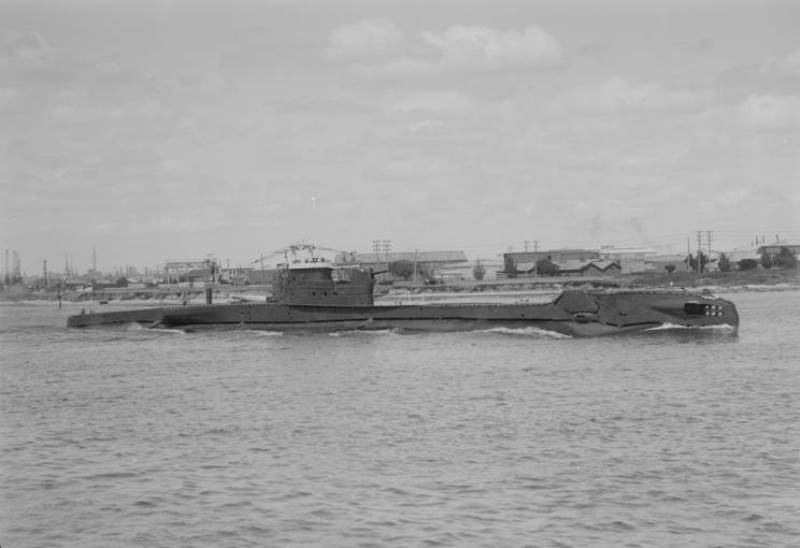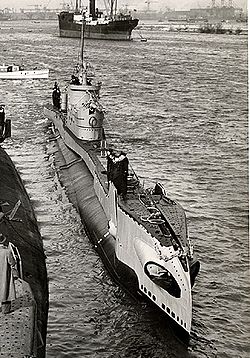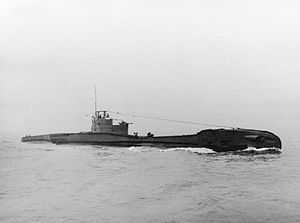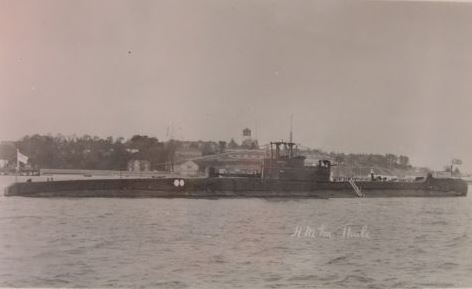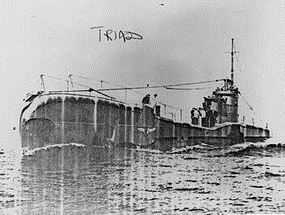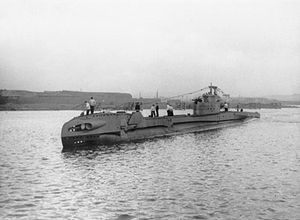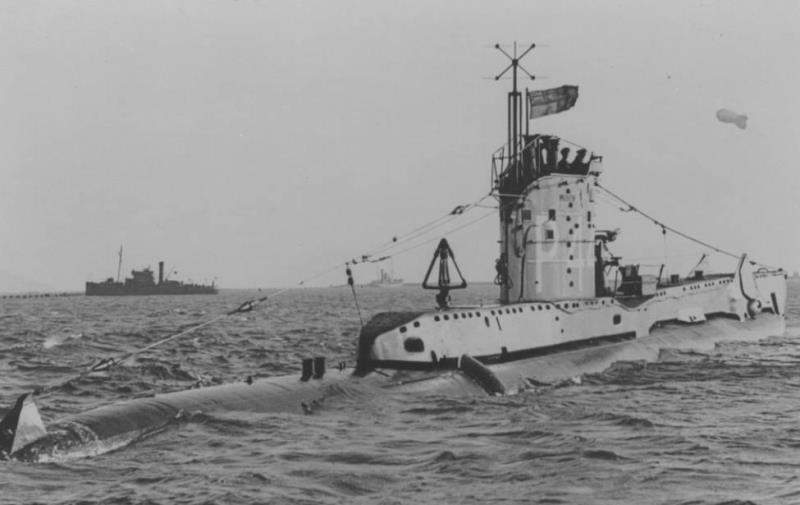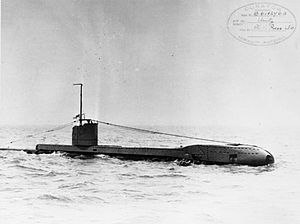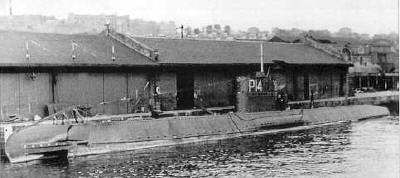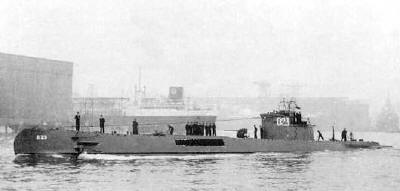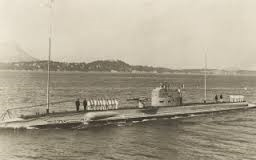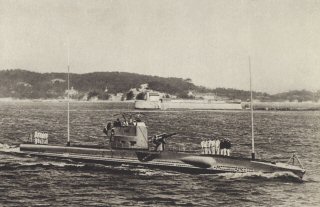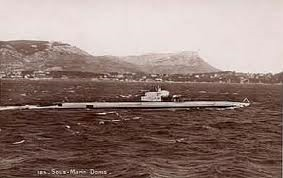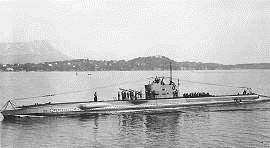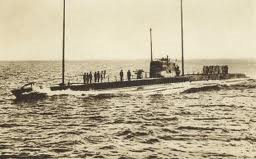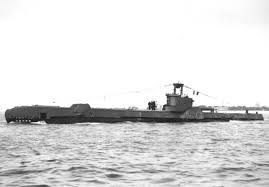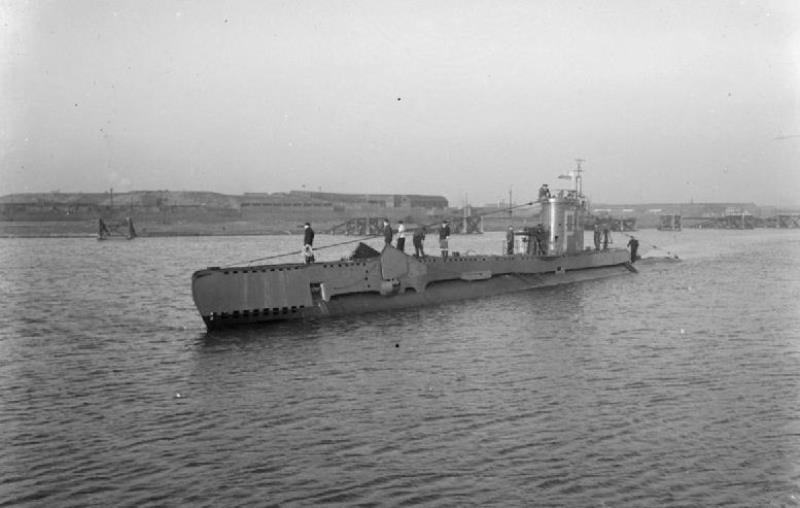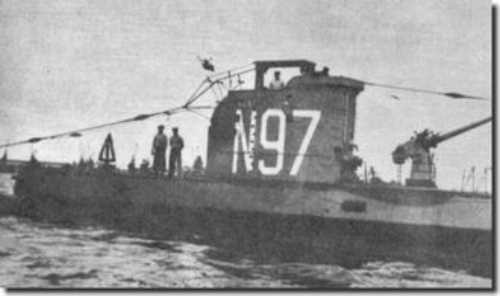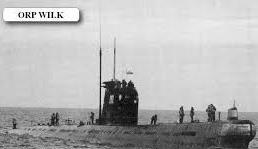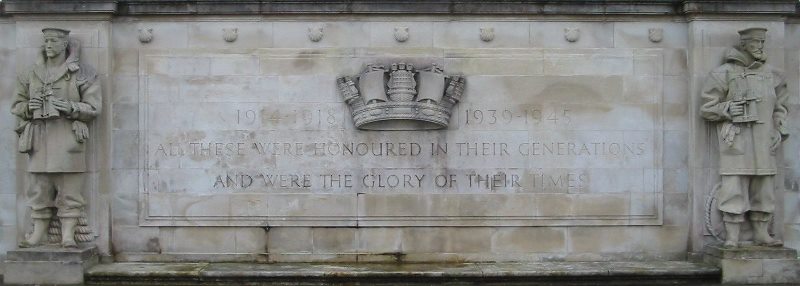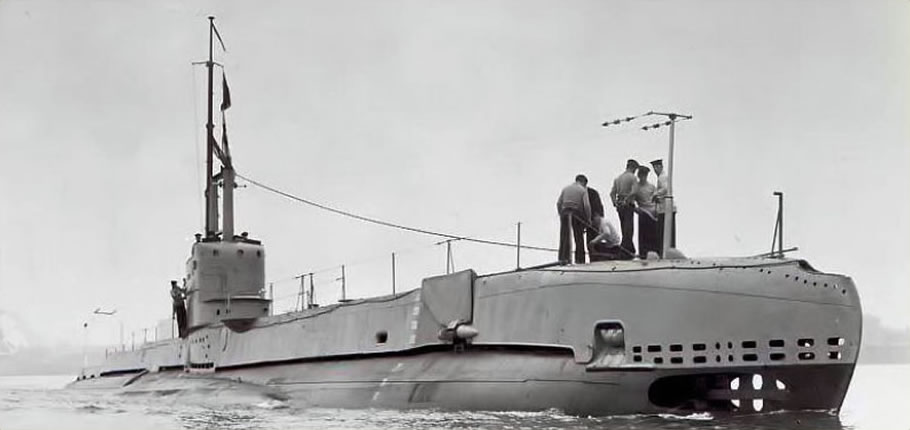
Submarines World War 2
World War II
1939-1945
British submarines fought a deadly battle with their German counterparts during World War Two. the Allies primary maritime tasks were based on the assumption Britain and France would go to war against the European Axis powers of Germany and Italy. The Royal Navy would be responsible for the North Sea and most of the Atlantic, although the French would contribute some forces. In the Mediterranean, defence would be shared between both Navies the Royal Navy, still the largest in the world in September 1939, included 60 submarines, mainly modern with nine building. They were reasonably well-equipped with effective guns, torpedoes and fire control. Approximately 21 were based in Home waters and four in the Atlantic. The main defined role for the Home Fleet submarines appears to be patrolling off southwest Norway and the German North Sea bases for surface raiders and U-boats on passage.
As the war progressed, the Royal Navy and its few Allied-manned submarines neither had the target opportunities of the German U-boats in the Atlantic Ocean nor the US submarines in the Pacific, and certainly in the early years suffered heavy losses for comparatively few gains at least in Axis warships. Yet once account is taken of such vital activities as the heavy merchant ship sinking’s in the Mediterranean, certainly in the battle for North Africa, the many dangerous cloak-and-dagger operations so vital to Churchill’s command to “set Europe alight”, helping to cut Germany supply routes from Norway and Japanese ones to Burma, then the even more silent part of the “Silent Service” played a major role in clearing the seas of Axis shipping. The figures for merchant ship sinking’s by British submarines are not complete but give some idea of their successes.
Here lists some of the Submarines which visited or where based at Harwich.
H Class 1917-1945
The British H boats, known as the H21 Class, were a modification of the American design, and accommodated a heavier torpedo armament which increased the overall length of the class by over 21 feet. Using engines, main motors and other fittings obtained from America speeded-up construction.
HMS H28
- Laid Down. 18/03/1917
- Launched. 12/03/1918
- Completed. 29/06/1918
- Builder. Vickers
- Build Group. H2
- Length. 171 ft.
- Diving Depth. 15 ft.
- Speed. 13 Knots
- Complement. 22
- Fate. Scrapped 1944
H28 was built by Vickers Limited, Barrow-in-Furness, as part of the Batch 3 H class submarines. She was laid down on 18 March 1917 and was commissioned on 29 June 1918. Despite their cramped size and lack of a deck gun, the class became enormously popular amongst submariners, and saw action all around the British Isles, some being transferred as far as the Adriatic. Due to the later arrival of most of the class, they were unable to have a massive impact, only achieving two victories. H28 collided with a steamer in the Bruges Canal in May 1929 and was scrapped on 18 August 1944.
HMS H31
- Laid Down. 19/04/1917
- Launched. 16/11/1918
- Completed. 21/02/1919
- Builder. Vickers
- Build Group. H2
- Length. 171 ft.
- Diving Depth. 15 ft.
- Speed. 22 Knots
- Complement. 22
- Fate. Sank 1941
H31 was built by Vickers Limited, Barrow-in-Furness. She was laid down on 19 April 1917 and was commissioned on 21 February 1919. H31 survived until World War II . During the war, she took part in the operation to keep the German battleship Scharnhorst in Brest, France in November 1941 before the “Channel Dash” to German homeports in the company of Gneisenau and Prinz Eugen in February 1942. During the operation, H31 was sunk by unknown causes, but most believe she was mined in the Bay of Biscay on 24 December 1941.
HMS H34
- Laid Down. 20/11/1917
- Launched. 05/11/1918
- Completed. 10/09/1919
- Builder. Cammell Laird
- Build Group. H2
- Length. 171 ft.
- Diving Depth. 15 ft.
- Speed. 11.5 Knots
- Complement. 22
- Fate. Scrapped 1945
H34 was built by Cammell Laird, Birkenhead. She was laid down on 20 November 1917 and was commissioned on 10 September 1919. H34 was one of the seven H class submarines to survive until the end of World War II . She was sold for scrapping in Troon in July 1945
HMS H44
- Launched. 19/02/1919
- Completed. 15/04/1920
- Builder. Armstrong Whitworth
- Length. 171 ft.
- Diving Depth. 15 ft.
- Speed. 13 Knots
- Complement. 22
- Fate. Scrapped 1945
H44 was built by Armstrong Whitworth and launched on 17 February 1919. She served in the Second World War. on the 21ST of June 1940. H44 torpedoed and sank the small Danish merchant Alfa off Texel, Netherlands. At 1750 hours H44 spotted a merchant ship of about 3000 tons at 4000 yards. At 1810 hours two torpedoes were fired from 3500 yards. One torpedo was seen to hit the target amidships three minutes after firing. Four of the crew of the Alfa died in the attack.
H44 was sold in 1944 and was broken up at Troon in February 1945.
HMS H49
- Laid Down. 21/01/1918
- Launched. 15/07/1919
- Completed. 25/10/1919
- Builder. Beardmore
- Build Group. H2
- Length. 171 ft.
- Diving Depth. 15 ft.
- Speed. 13 Knots
- Complement. 22
- Fate. Sank 17/10/1940
H49 was built by William Beardmore and Company, Dalmuir. She was laid down on 15 July 1919 and commissioned on 25 October 1919. H49 sailed from Harwich on the 17th of October 1940 with orders to patrol off Texel, on the Dutch coast. At 15.10 on the 17th, west of Texel island, the submarine sighted a German anti-submarine flotilla of five vessels at a distance of 3000 yards; the flotilla also spotted the submarine. H49 immediately dived to 60 feet and depth charges began to fall around her. The submarine endured over two hours of depth charge attacks until 1850 when a large oil slick was sighted on the surface by the attacking vessels marking the end of H49. There was only one survivor, Leading Stoker George William Oliver from Hartlepool. He was rescued by German trawlers and spent the rest of the war as a POW at Marlag M.
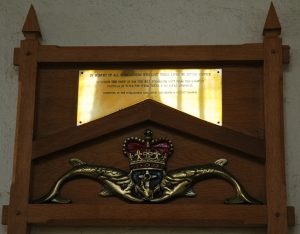
Memorial
H49 had a displacement of 440 tonnes (490 short tons) at the surface and 500 tonnes (550 short tons) while submerged. It had a total length of 171 feet (52 m), a beam length of 15 feet 4 inches (4.67 m), and a draught length of 12 metres (39 ft.). It contained diesel engines providing a total power of 480 horsepower (360 kW) and two electric motors each providing 320 horsepower (240 kW) power. The use of its electric motors made the submarine travel at 11 knots (20 km/h; 13 mph). It would normally carry 16.4 tonnes of fuel and had a maximum capacity of 18 tonnes.
The submarine had a maximum surface speed of 13 knots (24 km/h; 15 mph) and a submerged speed of 10.5 knots (19.4 km/h; 12.1 mph). Post-H20 British H-class submarines had ranges of 2,985 nautical miles (5,528 km; 3,435 mi) at speeds of 7.5 knots (13.9 km/h; 8.6 mph) when surfaced. H49 was fitted with an anti-aircraft gun and four 21 inches (530 mm) torpedo tubes. Its torpedo tubes were fitted to the bows and the submarine was loaded with eight 21 inches (530 mm) torpedoes. It is a Holland 602 type submarine but was designed to meet Royal Navy specifications. Its complement was twenty-two crew members.
HMS H50
- Laid Down. 23/01/1918
- Launched. 25/10/1919
- Completed. 03/02/1920
- Builder. William Beardmore
- Build Group. H2
- Length. 171 ft.
- Diving Depth. 15 ft.
- Speed. 11.5 Knots
- Complement. 22
- Fate. Scrapped 1945
H50 was built by William Beardmore and Company, Dalmuir. She was laid down on 23 January 1918 and was commissioned on 3 February 1920. H50 was one of seven ships to survive to the end of World War II . She was sold for scrapping in July 1945 in Troon.
L Class 1917-1942
The L class submarine were originally planned under the emergency war programme as an improved version of the British E class submarine. The scale of change allowed the L class to become a separate class.
The L class served throughout the 1920s and the majority were scrapped in the 1930s but three remained operational as training boats during World War II. The last three were scrapped in 1946 after long distinguished service.
HMS L23
- Laid Down. 29/08/1917
- Launched: 01/07/1919
- Completed. 31/10/1924
- Builder. Vickers/Chatham Dockyard
- Build Group. L2
- Length. 228 ft.
- Diving Depth. 150 ft.
- Speed. 17 Knots
- Complement. 38
- Fate. Decommissioned 1946
L23 was laid down on 29 August 1917 and moved to HM Dockyard, Chatham for completion. L23 survived a heavy depth charge attack by two German destroyers in February 1940. But luckily, an oil escape occurred which fooled the Germans into believing she was destroyed.
L23 was decommissioned in May 1946 after a long, distinguished service.
HMS L26
- Laid Down. 31/01/1917
- Launched: 25/09/1919
- Completed.
- Builder. Vickers/Chatham Dockyard
- Build Group. L2
- Length. 228 ft.
- Diving Depth. 150 ft.
- Speed. 17 Knots
- Complement. 38
- Fate. Sunk 1946
L26 was built by Vickers, Barrow-in-Furness. She was transferred to HM Dockyard, Portsmouth for completion. L26 was damaged in the Mediterranean in March 1929, but was repaired in Gibraltar. On 8 October 1933, there was an explosion on board in Campbeltown Harbour, Scotland, which killed two and injured 10 crew. She was used as a training submarine from 1940 to 1942.
She was transferred to Canada in 1944 as an anti-submarine training ship. She was based at Digby, Nova Scotia at HMCS Cornwallis and at Bermuda, attached to HMCS Somers Isles. She was sunk as a target for sonar testing off St. Margarets Bay, Nova Scotia on 1 November 1946. The wreck was rediscovered during the search for wreckage from the Swissair Flight 111 crash.
Oberon Class 1959 – 1998
Between 1959 and 1964, thirteen Oberon Class submarines were constructed for the Royal Navy, three of which Olympus, Orpheus and Osiris were built at Barrow. Although they have the same dimensions, displacement and machinery as the Porpoise Class, the Oberon’s incorporated some important developments, such as improved detection equipment and the ability to fire homing torpedoes.
Perhaps the most radical change that occurred with the introduction of the Oberon Class was the fact that for the first time in British submarines plastic was used in the superstructure construction – before and abaft the bridge, in most units the superstructure was mainly glass fibre laminate. In addition, the superstructure of the second ship, the Vickers-built Orpheus, was of aluminium.
HMS Oberon
- Pennant. N21
- Laid Down. 22/03/1924
- Launched. 24/09/1926
- Completed. 24/08/1927
- Builder. Chatham Dockyard
- Length. 269 ft.
- Diving Depth. 500 ft.
- Speed. 15 Knots
- Complement. 53
- Fate. Scrapped 1945
HMS Oberon was the first of the Oberon class submarines. She was built by Chatham Dockyard and was launched on the 18th July 1959. Oberon cost £2.43 million. she was the first of the class to have a deeper casing installed to house the equipment for initial training of SSN crews.Oberon was paid off in 1986 and was sold in 1987 to the Seaforth Group to be refitted for resale to Egypt, but was broken up at Grimsby in 1991.
S Class 1935 – 1970
During the modernisation of the submarine force in the early 1930s, the Royal Navy became aware of the need for smaller boats, suitable for employment in the North Sea and restricted waters such as the Mediterranean. In response to this requirement, orders were placed for medium-sized patrol submarines, from which the Swordfish and Shark Classes were evolved.
HMS Salmon
- Pennant. N65
- Class. S2
- Laid Down. 15/06/1933
- Launched. 30/04/1934
- Completed. 08/03/1935
- Builder. Cammell Laird
- Length. 217 ft.
- Diving Depth. 350 ft.
- Speed. 15 Knots
- Complement. 48
- Fate. Sank 09/07/1940
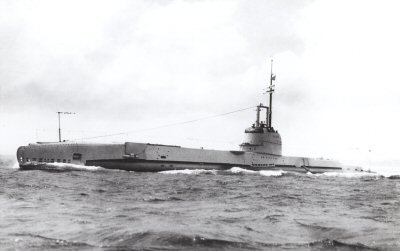
HMS Salmon
HMS Salmon was built by Cammel Laird, Birkenhead and launched on 30th April 1934.On 13 December 1939, Salmon sighted a fleet of German warships. She fired a spread of torpedoes which damaged two German cruisers (one was German cruiser Leipzig, the other, her younger sister ship, German cruiser Nürnberg. Salmon evaded the fleet’s destroyers, which hunted her for two hours. She was lost, probably sunk by a mine, on 9 July 1940.
HMS Sealion
- Pennant. N72
- Class. S2
- Laid Down. 16/05/1933
- Launched. 16/03/1934
- Completed. 21/12/1934
- Builder. Cammell Laird
- Length. 217 ft.
- Diving Depth. 350 ft.
- Speed. 15 knots
- Complement. 48
- Fate. Sank 13/03/1945
HMS Sealion was built by Cammel Laird,Birkenhead she was launched on the 16th March 1934. She had an eventful career after the outbreak of war. Under the command of LCdr Benjamin Bryant, she attacked U-21 off the Dogger Bank in November 1939, but failed to sink her. Her first success was the German merchant August Leonhardt, sunk in April 1940 off the Danish island of Anholt. She later attacked the German merchant Moltkefels, but failed to hit her. She fired upon the beached Palime, and unsuccessfully attacked U-62 in July 1940. She finished her patrol by sinking the Norwegian merchant Toran and attacking but failing to sink the German merchant Cläre Hugo Stinnes in August.
On 5 February 1941 she shelled and sank the Norwegian Hurtigruten cargo-passenger ship Ryfylke. In May of that year Sealion unsuccessfully attacked U-74. In July she attacked French shipping, sinking the French fishing vessels Gustav Eugene and Gustav Jeanne, and on succeeding days, Christus Regnat and St Pierre d’Alcantara.
Sealion was scuttled as an ASDIC target off the Isle of Arran on 13 March 1945.
HMS Seawolf
- Pennant. N47
- Class. S2
- Laid Down. 25/05/1934
- Launched. 28/11/1935
- Completed. 12/03/.1936
- Builder. Scott’s
- Length. 217 ft.
- Diving Depth. 350 ft.
- Speed. 15 knots
- Complement. 48
- Fate. Scrapped 1945
HMS Seawolf was launched on the 28th November 1935 by Scotts of Greenock. On 6 October 1939, she attacked the German light cruiser Nürnberg and the torpedo boat Falke in the Skagerrak, but none of the targets were hit. In April 1940, Seawolf sank the German merchant Hamm, and in November, claimed to have sunk the German merchant Bessheim. Bessheim was mined and sunk the previous day off Hammerfest, so Seawolf had probably attacked another merchant.
She was one of a number of submarines ordered to track the German battleship Bismarck before her eventual sinking. On 6 March 1942, Seawolf sighted the German battleship Tirpitz, along with her escorting destroyers Paul Jacobi, Friedrich Ihn, Hermann Schoemann and Z-25. The German ships had sailed from Trondheim, Norway with the intention of attacking convoy PQ 12.
HMS Seawolf arrived in Halifax, Nova Scotia in 1943 to help the Royal Canadian Navy in anti-submarine warfare training. Seawolf was sold for breaking up in November 1945 to Marine Industries, of Montreal.
HMS Shalimar
- Pennant. P242
- Class. S3
- Laid Down. 17/04/1942
- Launched. 22/04/1943
- Completed. 22/04/1944
- Builder. Chatham Dockyard
- Length. 217 ft.
- Diving Depth. 350 ft.
- Speed. 15 Knots
- Complement. 48
- Fate. Scrapped 1950
HMS Shalimar was built at Chatham Dockyard and launched on April 22, 1943. She spent most of her wartime career in the Far East, where she caused significant losses amongst enemy shipping. She sank fourteen Japanese sailing vessels, the auxiliary minesweeper Choun Maru No.7, two Japanese tugs and three barges, a coaster and an identified Japanese vessel. She also damaged five Japanese landing craft, and in conjunction with her sister Sea Dog, she sank a Japanese coaster. Shalimar survived the Second World War, and was sold in July 1950 to be broken up at Troon.
HMS Shark
- Pennant. N54
- Class. S2
- Laid Down. 12/06/1933
- Launched. 31/05/1934
- Completed. 31/12/1934
- Builder. Chatham Dockyard
- Length. 217 ft.
- Diving Depth. 350 ft.
- Speed. 15 knots
- Complement. 48
- Fate. Scuttled 06/07/1940
HMS Shark was built by Chatham Dockyard and launched on the 31st May 1934. Soon after war began, Shark sailed for the uk with 3 other submarines of her class, arriving back on 22nd October 1939 at Portsmouth. She made one war patrol before sailing to Sheerness for repairs. from Sheerness she moved to Harwich and patrolled from there until late May 1940 when she sailed to Rosyth. She was attacked and damaged by German seaplanes while patrolling on the surface near Skudesnes, south-west Norway on 5 July 1940. The following morning, 3 German minesweeping trawlers arrived to take Shark under tow but she was scuttled by her crew about 25 nautical miles west-south-west of Egersund, Norway slightly damaging one of them in the process.
HMS Shakespeare
- Pennant. P221
- Class. S3
- Laid Down. 13/11/1940
- Launched. 08/12/1941
- Completed. 10/07/1942
- Builder. Vickers Armstrong
- Length. 217 ft.
- Diving Depth.350 ft.
- Speed. 15 knots
- Complement. 48
- Fate. Scrapped 14/07/1946
HMS Shakespeare was built by Vickers Armstrong of Barrow-in-Furness and launched on the 8th December 1941, she served in the Mediterranean and later in the Eastern Fleet during the Second World War, from December 1944. Whilst serving in the Mediterranean, she sank the Italian sailing vessels Sant’ Anna M. and Adelina, the Greek sailing vessel Aghios Konstantinos and two unidentified sailing vessels. She also sank the Italian submarine Velella, which was lost with all hands, and unsuccessfully attempted to torpedo what is identified as an Italian light cruiser. On transferral to the Far East, she sank the Japanese merchant cargo ship Unryu Maru. She was damaged by gunfire and air attack in the Nankauri Strait, Andaman Islands on 3 January 1945, whilst engaged with the Japanese auxiliary minesweeper Wa 1. Both ships were damaged. Shakespeare returned to port, but was written off as a constructive total loss.
She was sold on 14 July 1946 and was broken up by Ward, of Briton Ferry.
HMS Snapper
- Pennant. N39
- Class. S2
- Laid Down. 18/09/1933
- Launched. 25/10/1935
- Completed. 14/06/1935
- Builder. Chatham Dockyard
- Length. 217 ft.
- Diving Depth. 350 ft.
- Speed. 15 Knots
- Complement. 48
- Fate. Lost 11/02/1941
HMS Snapper was built by Chatham Dockyard and launched on the 25th October 1935. Snapper spent most of her career in home waters. She was mistakenly attacked by a British aircraft when returning to Harwich after a patrol in the North Sea. Although suffering a direct hit, Snapper escaped damage. She went on to sink the small German tanker Moonsund, the German merchant Florida, the German auxiliary minesweepers M 1701 / H. M. Behrens and M 1702 / Carsten Janssen, the German armed trawler V 1107 / Portland and the Norwegian merchant Cygnus. She also attacked the German armed merchant cruiser Schiff 21 / Widder, but the torpedoes missed their target. During the first week in December 1939 weather conditions were not good and while patrolling off Texel, Snapper had difficulty depth keeping in the shallow water. While on the surface she ran aground on a sandbank but managed to work herself off. This was not a good time for Snapper as she was later bombed by Coastal Command but without damage.
HMS Spearfish
- Pennant. N69
- Class. S2
- Laid Down. 23/05/1935
- Launched. 21/04/1936
- Completed. 11/12/1936
- Builder. Cammell Laird
- Length. 217 ft.
- Diving Depth. 350 ft.
- Speed. 15 Knots
- Complement. 48
- Fate. Sank 01/08/1940
HMS Spearfish was built by Cammell Laird, Birkenhead and launched on the 21st April 1936.Her wartime career started inauspiciously, when on 24 September 1939, she was heavily damaged by German warships off Horns Reef. She was unable to submerge but nevertheless managed to escape. A rescue mission was undertaken by the British Humber force and Home Fleet, including the aircraft carrier Ark Royal, and the battleship Nelson, which performed escort duty whilst search and rescue attempts were made.
Spearfish safely put in Rosyth on the 26th, and repairs were completed in early March 1940. Spearfish sailed from Rosyth on 31 July 1940, still under the command of “Jock” Forbes, to patrol off the Norwegian coast. On 1 August she was spotted on the surface by U-34 under the command of Wilhelm Rollmann who attacked and sank her, about 180 miles west-southwest of Stavanger. There was only one survivor, Able Seaman William V. Pester.
- Pennant. P229
- Class. S3
- Laid Down. 01/07/1941
- Launched. 17/04/1942
- Completed. 21/12/1942
- Builder. Chatham Dockyard
- Length. 217 ft.
- Diving Depth. 350 ft.
- Speed. 15 Knots
- Complement. 48
- Fate. Sank 24/09/1952
HMS Sportsman
HMS Sportsman was launched at Chatham Dockyard on the 17th April 1942. Her deployment to the Far East was cancelled when the war with Japan ended. She was reduced to reserve at Harwich on 20 December 1945. On 8 July 1952 she was lent to the French Navy who named her La Sibylle. She was lost in the Mediterranean with her crew of 47 on 24 September 1952, at a depth of 700 m off Cape Camarat. During exercises with the escort-vessel “Touareg” she was at minimum depth of 30 metres, changing course by 30° every 10 minutes. Having dived at 0743, “La Sibylle” was attacked for a first time at 0752. During a second attack, ASDIC contact was lost at 0802 at 270 m distance, just before the “Touareg” was vertically above her. Contact was never regained; the submarine’s buoy was seen at 0815, probably because the buoyancy of the buoy broke its retaining cable when the submarine was crushed by the sea pressure on the hull. No external collision, explosion or other noises (such as that of blowing main ballast) were detected by “Touareg” or by the submarine “Laubie” patrolling in a neighboring sector. No mention was made of any practice depth-charges which might have been fired by the “Touareg”, nor of any break-up noises of crushing at depth (which would have occurred long before “La Sibylle” reached the bottom at 700m). She was lost off Toulon on 24 September 1952. The entire crew of 47 officers and men went down with the ship.
HMS Sterlet
- Pennant. N22
- Class. S2
- Laid Down. 14/07/1936
- Launched. 22/09/1937
- Completed. 06/04/1938
- Builder. Chatham Dockyard
- Length. 217 ft.
- Diving Depth. 350 ft.
- Speed. 15 knots
- Complement. 48
- Fate. Sank 18/04/1940
HMS Sterlet was built by Chatham Dockyard, and was launched on the 22nd September 1937.April 1940, she departed Harwich to conduct a war patrol in the Skagerrak between Norway, Sweden and Denmark. on 12th April, she unsuccessfully attacked a German convoy consisting of 3 merchant ships and a destroyer. on 15th April, Sterlet torpedoed and sank the German gunnery training ship Brummer in the Skagerrak, south of Larvik, Norway. on the 18th April, she was depth charged by the German anti-submarine trawlers UJ-125, UJ-126 and UJ-128. Whether that attack destroyed the boat or not is unclear, Sterlet and her crew were never seen or heard from again and she was presumed lost with all hands.
HMS Stratagem
- Pennant. P234
- Class. S3
- Laid Down. 15/04/1942
- Launched. 21/06/1943
- Completed. 09/10/1943
- Builder. Cammell Laird
- Length. 217 ft.
- Diving Depth. 350 ft.
- Speed. 15 knots
- Complement. 48
- Fate. Sank 22/11/1944
HMS Stratagem was built by Cammell Laird and launched on 21 June 1943. Stratagem left Trincomalee on 10 November 1944 to patrol in the vicinity of Malacca where it was believed the Japanese were loading ships with bauxite ore. On 19 November she attacked and sank the tanker Nichinan Maru, but on 22 November she was spotted by a Japanese aircraft. She attempted to dive and escape but the aircraft directed the sub-chaser CH 35 to where it had dived. CH 35 launched depth charges, the first of which caused the submarines bow to strike the bottom. The submarine was plunged into darkness and the forward part began to flood. Attempts to shut the watertight door to the forward compartment failed and the crew were forced to abandon the ship.Ten of her crew were taken prisoner, of whom only three survived captivity.
HMS Storm
- Pennant. P233
- Class. S3
- Laid Down. 23/06/1942
- Launched. 18/05/1943
- Completed. 23/08/1943
- Builder. Cammell Laird
- Length. 217 ft.
- Diving Depth. 350 ft.
- Speed. 15 Knots
- Complement. 48
- Fate. Scrapped 1949
HMS Storm was built by Cammell Laird, Birkenhead and launched on the 18th of May 1943. After sea trials and working up in Holy Loch and Scapa Flow, Storm’s first patrol was to the Norwegian coast, north of the Arctic Circle. The day after Boxing Day 1943 she departed Holy Loch for the long passage to Ceylon (modern Sri Lanka) via Gibraltar and the Suez Canal, arriving in Trincomalee on 20 February 1944. Her first patrol in the Far East was to the Malacca Straits between Malaya and Sumatra, both then occupied by the Japanese. On 11 March 1944 she sank her first victim, a 500 ton coaster, with gunfire. In April she patrolled to the Andaman Islands in the Bay of Bengal south of Rangoon and on 14 April made her first sinking by torpedo, a 3,500 ton merchant vessel. The following day Storm attacked a merchant ship that was escorted by what was originally identified as a Destroyer, but was actually a Minesweeper, plus a Submarine Chaser and one other anti-submarine ship. She sank the Minesweeper, W-7, with torpedoes. Storm’s third patrol was a so-called “cloak-and-dagger” operation, to land a local agent on an island off the northern tip of Sumatra. This ended in failure when men in an inflatable dinghy sent out to retrieve the agent from the island heard him calling from the shore at night. His voice was coming from the wrong location, and sounded strained: the dinghy retreated and Japanese machine guns opened up. The dinghy occupants made it safely back to the submarine, but the fate of the agent was unknown. The fourth patrol was back to the Malacca Straits and a third victim was sunk by torpedo; this time a Japanese submarine-chaser. A subsequent patrol led to the taking of Japanese prisoners who were brought back to Trincomalee, the first such captures of the war.
HMS Sturgeon
- Pennant. 73s
- Class. S1
- Laid Down. 01/01/1931
- Launched. 01/01/1932
- Completed. 27/02/1933
- Builder. Chatham Dockyard
- Length. 202 ft.
- Diving Depth. ft.
- Speed. 13.75 knots
- Complement. 36
- Fate. Scrapped 1947
HMS Sturgeon was built by Chatham Dockyard and launched on the 8th January 1932 , Sturgeon spent most of her career in the North Sea, off the Scandinavian coast. on September 14, 1939, she attacked her sister ship HMS Swordfish with three torpedoes but they all missed. This took place off the coast of Norway. Because of this incident, the Admiralty increased the operating distance of British submarines off Norway from 4 miles to 16 miles. She went on to sink the German troop transport Pioneer, the Danish merchant Sigrun, the Norwegian merchant Delfinus , and the German merchant Boltenhagen.
She also fired six torpedoes against the German submarine U-43, but they all missed their target.
Sturgeon was returned to the Royal Navy after being lent to the Royal Netherlands Navy, and then broken up at Granton in January 1946.
HMS Subtle
- Pennant. P251
- Class. S3
- Laid Down. 01/02/1943
- Launched. 27/01/1944
- Completed. 16/04/1944
- Builder. Cammell Laird
- Length. 217 ft.
- Diving Depth. 350 ft.
- Speed. 15 knots
- Complement. 48
- Fate. Scrapped 1959
HMS Subtle was built by Cammell Laird and launched on January 27, 1944. She survived the Second World War, spending the period between December 1944 and May 1945 with the Eastern Fleet. Here, she sank six Japanese sailing vessels and a Japanese coaster. Together with her sister, HMS Statesman, she helped in the tracking and sinking of the Japanese heavy cruiser Haguro. Subtle was finally sold off to be broken up in July 1959 in Charlestown.
HMS Sunfish
- Pennant. N81
- Class. S2
- Laid Down. 22/07/1935
- Launched. 30/09/1936
- Completed. 02/07/1937
- Builder. Chatham Dockyard
- Length. 217 ft.
- Diving Depth. 350 ft.
- Speed. 15 knots
- Complement. 48
- Fate. Lost 27/07/1944
HMS Sunfish was built by Chatham Dockyard and was launched on the 14th March 1933. Three weeks after the outbreak of WW2, on 25th September 1939, she recommissioned at Chatham and was immediately sent to Harwich to join 3rd Submarine Flotilla, commanded by Lt-Cdr Jack Slaughter. In late November 1939, she set off from Harwich with her Chatham-built sister-boat Snapper to search for the German Battle cruiser Scharnhorst but failed to find it. Sunfish got stuck into the enemy for the first time on 19th February 1940, when she fired 4 torpedoes at the German submarine U-14, 30 miles NW of Heligoland. Sunfish torpedoed and sank the German merchant vessel Amasis in the Kattegat. on 13th April 1940, Sunfish torpedoed and damaged the German Q-Ship Schiff40 which had to be grounded to prevent it sinking. The following day, she torpedoed and sank another German Q-Ship, Schiff35 On 9th May 1940, Lt-Cdr Slaughter was awarded the DSO and later that month, the flotilla was moved to Rosyth.
T Class 1935 – 1970
During the 1930s, the construction of overseas patrol submarines waned considerably, and so the Admiralty decided, in 1934-35, to build a new ocean-going boat to replace the Oberon, Parthian and Rainbow Classes – which had not lived up to expectations.
During the Second World War, T Class submarines operated successfully in all the theatres in which the Royal Navy was committed and many of the Group 2 boats were further modified for employment in the Far East – several ballast tanks were changed into fuel tanks, thereby increasing the fuel load from 132 to 230 tons and surface range from 8000 to 11 000 miles at 10 knots. In a theatre where it took up to a week to sail from base to the operational area. This increase in range, together with increased stores capacity enabled long patrols to be carried out – the record being 56 days by the Barrow-built Tantalus, 40 days of which were spent in the patrol area.
Although the T Class obtained satisfactory results, the fact that they were one of the classes which bore the brunt of Second World War submarine operations meant that they were subjected to the highest loss rate. For example, 13 boats were lost in the Mediterranean, despite the fact that large enemy vessels were very vulnerable in that sea. Nevertheless, the T Class were particularly successful against submarines, and 13 boats (six of which were Barrow-built) sank 13 enemy submarines: six Italian, four German and three Japanese.
HMS Tactician
- Pennant. P314
- Class. T3
- Laid Down. 13/11/1941
- Launched. 29/07/1942
- Completed. 29/11/1942
- Builder. Vickers Armstrong
- Length. 273 ft.
- Diving Depth. 300 ft.
- Speed. 15 Knots
- Complement. 61
- Fate. Scrapped 06/12/1963
HMS Tactician was built by Vickers-Armstrong and launched on the 29th of July 1942, Tactician served in the Mediterranean and the Far East during her wartime career. Whilst operating against the Italians, she sank the Italian auxiliary patrol vessel V17 / Pia and the Italian sailing vessel Bice. She also torpedoed and damaged the Italian merchant Rosandra off the coast of Albania. The ship sank the following day. on being transferred to the Pacific, she continued to harass enemy shipping, sinking a small Japanese vessel and two Siamese sailing vessels before the end of the war.
Tactician survived the war and continued in service with the navy, finally being scrapped at Newport on 6 December 1963
HMS Taurus
- Pennant. P399
- Class. T3
- Laid Down. 30/09/1941
- Launched. 27/06/1942
- Completed. 03/11/1942
- Builder. Vickers Armstrong
- Length. 273 ft.
- Diving Depth. 300 ft.
- Speed. 15.25 Knots
- Complement. 61
- Fate. Scrapped 1960
HMS Taurus was built by Vickers-Armstrong and launched on 27 June 1942. She served in the Mediterranean and the Pacific Far East during the Second World War. Whilst serving in the Mediterranean, she sank the small French merchant Clairette, the Spanish merchant Bartolo, the Italian merchant Derna, the French tug Ghrib and two barges, the Portuguese Santa Irene , the small Italian tanker Alcione C., the Italian sailing vessel Luigi, twenty eight Greek sailing vessels, and the small Greek ship Romano. She also damaged a further two sailing ships and the Greek merchant Konstantinos Louloudis. She was transferred to the Far East to operate against the Japanese, where she sank the Japanese submarine I-34, two Japanese tugboats and a barge and the Japanese salvage vessel Hokuan I-Go. She also laid a number of mines, which damaged the Japanese submarine I-37 and sunk the Japanese transport ship Kasumi Maru.
Having survived the war, Taurus was transferred to the Royal Netherlands Navy on 4 June 1948 and commissioned into service the same day. She was renamed Dolfijn.
HMS Tempest
- Pennant. N86
- Class. T2
- Laid Down. 06/01/1940
- Launched. 10/06/1941
- Completed. 06/12/1941
- Builder. Cammell Laird
- Length. 273 ft.
- Diving Depth. 300 ft.
- Speed. 15.25 Knots
- Complement. 56
- Fate. Sank 13/02/1942
HMS Tempest was built by Cammell Laird and Launched on the 10th of June 1941. She sailed from Malta on the night of 10 February to patrol the Gulf of Taranto. On the evening of the 11th Tempest was signaled that the Italians were aware of a submarine in her vicinity and that it should be assumed that her patrol had been compromised. On the 13th, Tempest was sighted on the surface by the Italian destroyer Circe. Tempest attempted to dive, but Circe began depth charging the area, eventually resulting in oil being seen on the surface. Tempest had been crippled, and forced to surface, where she was hit by gunfire from the Circe. The crew abandoned the submarine, and was picked up by the destroyer. The Italians attempted to board the abandoned vessel but were unable to, due to rough seas. Unable to board Tempest due to the bad weather, the Italian destroyer opened fire, scoring more than a dozen direct hits, but failing to sink the Tempest. Finally the Italians attempted to take the submarine in tow. Two members of the destroyer’s crew boarded the submarine and prepared the tow. as Circe maneuvered to take up the tow, Tempest suddenly started to sink, forcing those on board to jump into the sea. Tempest slipped beneath the wave’s stern-first, with the bows disappearing vertically.
HMS Thule
- Pennant. P325
- Class. T3
- Laid Down. 20/09/1941
- Launched. 22/10/1942
- Completed. 13/05/1944
- Builder. Devonport Dockyard
- Length. 273 ft.
- Diving Depth. 300 ft.
- Speed. 15.25 Knots
- Complement. 61
- Fate. Scrapped 14/09/1962
HMS Thule was built at Devonport Dockyard, and launched on 22 October 1942. Thule served in the Far East for much of her wartime career, where she sank thirteen junks, two lighters and five sampans with gunfire in the Strait of Malacca in a twelve-day period between 17 December 1944 to 29 December 1944. She also attacked a submarine, probably the Japanese submarine Ro-113 and believed she had sunk it, but Thule’s torpedoes exploded prematurely and the submarine escaped unharmed.
Thule ended her 7th war patrol at Fremantle. This was Thule’s last war patrol. After VJ-day she made some visits to Australian ports. She left Australia mid-October for Hong Kong. Early November she departed for the U.K. She arrived in the U.K. for refit late December 1945.
HMS Triad
- Pennant. N53
- Class. T1
- Laid Down. 24/03/1938
- Launched. 05/05/1939
- Completed. 16/09/1939
- Builder. Vickers Armstrong
- Length. 27 ft.
- Diving Depth. 300 ft.
- Speed. 15.25 knots
- Complement. 56
- Fate. Sank 15/10/1940
HMS Triad was launched by Vickers Armstrong in May 1939. Triad had a relatively short career, serving in the North Sea and the Mediterranean. In April 1940 she sank the German troop transport Ionia and attacked, but failed to sink the German depot ship Tsingtau. At 0100 hours on 15 October, the Enrico Toti sighted a large submarine 1,000 metres to port: both boats maneuvered into attack position but the British opened fire first, supposedly scoring two hits, one on the conning tower, the other on the bow. She also fired a torpedo which Enrico Toti avoided by turning sharply, then closed on the enemy submarine at top speed, firing as she approached. Soon, machine gun fire compelled the British gunners to abandon the exposed deck. As the British submarine started to dive, Toti fired a torpedo and hit the British submarine with two shells. The boat rose vertically then disappeared without survivors. The entire action had lasted less than 30 minutes
Rainbow had been ordered to leave the area on 13 October; she would have been gone 26-30 hours before the action described above began. Even at the modest speed of 6 knots , Rainbow would have been 200 nautical miles away from the spot at the time of the action. The only boat in Toti’s vicinity was Triad.
HMS Triumph
- Pennant. N18
- Class. T1
- Laid Down. 19/03/1937
- Launched. 16/02/1938
- Completed. 02/05/1939
- Builder. Vickers
- Length. 275 ft.
- Diving Depth. 300 ft.
- Speed. 15.25 Knots
- Complement. 56
- Fate. Mined 6/1/1942
HMS Triumph was built by Vickers Armstrong and launched on the 16th February 1938, Triumph departed from Sheerness for Harwich on the 1st of October 1940 where she arrived later the same day. Triumph sailed from Alexandria on 26 December 1941 to land a party near the Greek capital Athens before making a patrol in the Aegean Sea. She reported making the landing on the 30th, but did not show up on 9 January 1942 when she was to pick the party up again.
She was declared overdue on 14 January 1942. Probably lost on Italian mines off Milo Island, south east of Greece.
HMS Truculent
- Pennant. P315
- Class. T3
- Laid Down. 04/12/9141
- Launched. 12/09/1942
- Completed. 31/12/1942
- Builder. Vickers Armstrong
- Length. 273 ft.
- Diving Depth. 300 ft.
- Speed. 15 Knots
- Complement. 61
- Fate. Scrapped 08/05/1950
HMS Truculent was built by Vickers Armstrong and launched on the 12 September 1942 she was as of the third group of the T class submarines. on 12 January 1950, Truculent was returning to Sheerness, having completed trials after a refit at Chatham. In addition to her normal complement, she was carrying an additional 18 dockyard workers. She was travelling through the Thames Estuary at night. At 19:00, a ship showing three lights appeared ahead in the channel. It was decided that the ship must be stationary, and because Truculent could not pass to the starboard side without running aground, the order was given to turn to port. At once, the situation became clear; the Swedish oil tanker Divina — on passage from Purfleet and bound for Ipswich — came out of the darkness. The extra light indicated that she was carrying explosive material. The two vessels collided and remained locked together for a few seconds before the submarine sank.
Fifty-seven of her crew were swept away in the current after a premature escape attempt, 15 survivors were picked up by a boat from the Divina and five by the Dutch ship Almdijk. Most of the crew survived the initial collision and managed to escape, but then perished in the freezing cold mid-winter conditions on the mud islands that litter the Thames Estuary. Sixty-four men died as a result of the collision. Truculent was salvaged on 14 March 1950 and beached at Cheney Spit. The wreck was moved inshore the following day where 10 bodies were recovered. She was refloated on 23 March 1950 and towed into Sheerness Dockyard.
Truculent was sold to be broken up for scrap on 8 May 1950.
U Class 1938-1941
The British U Class submarines were a class of 49 small submarines built just before and during the Second World War. The class is sometimes known as the Undine class, after the first submarine built.
The initial three ‘U’ class boats all entered service in the latter half of 1938. Initially designed as training vessels, they were effective enough to persuade the Admiralty to expand the class, and improve their offensive capabilities to pose a more effective threat to enemy shipping.
HMS Undaunted
- Pennant. N55
- Class. U1
- Laid Down. 02/12/1939
- Launched. 20/08/1940
- Completed. 30/12/1940
- Builder. Vickers
- Length. 190 ft.
- Diving Depth. 200 ft.
- Speed. 11.5 Knots
- Complement. 33
- Fate. Sank 12/05/1941
HMS Undaunted was built by Vickers Armstrong, Barrow-in-Furness. She was laid down on 2 December 1939 and was commissioned on 30 December 1940. Undaunted spent much of her short career operating in the Mediterranean. On 1 May 1941, she sailed from Malta to patrol off Tripoli, Libya. She was due to return to Malta on 11 May but she failed to do so and is presumed lost on mines. Undaunted should have been back at Malta, but it is possible that a decision to remain at sea longer had been taken, or that she had suffered mechanical problems preventing her return. It is also possible that she was sunk by the Italian torpedo boat Pleiade off Tripoli on the 13th but this is not very likely.
HMS Unity
- Pennant. N66
- Class. U1
- Laid Down. 19/02/1937
- Launched. 16/02/1938
- Completed. 05/10/1938
- Builder. Vickers Armstrong
- Length. 190 ft.
- Diving Depth. 200 ft.
- Speed. 11.5 knots
- Complement. 33
- Fate. Sank 26/02/1940
HMS Unity was built by Vickers Armstrong, Barrow-in-Furness. She was laid down on 19 February 1937 and was commissioned on 5 October 1938.Unity sailed from Blyth on 29 April 1940 to patrol off Norway. The visibility was down to 300 yards as Unity moved out of the harbour into the main channel, where the Norwegian ship Atle Jarl was proceeding on her way from Scotland to the Tyne. A short while later visibility was down to 100 yards and neither vessel was aware of the other until the submarine spotted the ship at 50 yards and on a collision course. There was just time to shut the bulkhead doors and order the engines astern before the Atle Jarl smashed into the submarine. The order to abandon the submarine was given and Unity sank only five minutes after the collision. Two members of her crew, Lieutenant John Low and able Seaman Henry Miller, gave their lives by remaining behind in the flooded control room so that their shipmates could escape from the sinking vessel.
-
Dutch Submarines
-
O Class (Onderzeeboot) – Coastal Submarine
HNMS O14
- Pennant. O14
- Laid Down. 29/12/1928
- Launched: 03/10/1931
- Builder. Koninklijke Maatschappij De Schelde Class. O12
- Length. 60.42 m
- Diving Depth. 60 m
- Speed. 16 knots
- Complement. 31
- Fate. Scrapped 26/06/1943
HNMS O14 was an O12-class submarine of the Royal Netherlands Navy launched on the 3rd of October 1931 by Koninklijke Maatschappij De Schelde, Vlissingen (NL) and entered service on the 4th of March 1934. Just before the start of World War II O14 was in Curaçao. Because there was no need on the Allied side for a Dutch submarine to be stationed there, O4 returned to Europe. Based in England, it did patrol duty off the coast of Norway, with Convoy HX 79, and was decommissioned in 1943 due to a lack of replacement engines.
HNMS O23
- Pennant. O23
- Laid Down. 12/10/1937
- Launched: 05/12/1939
- Builder. John Thornycroft
- Class. O21
- Length. 77.7 m
- Diving Depth. ft.
- Speed. 19.5 knots
- Complement. 39
- Fate. Scrapped 1949
HNMS 023 was an O21-class submarine of the Royal Netherlands Navy launched on the 5th December 1939. built by D.M, Rotterdam and Completed by John Thornycroft. Following the German invasion of 10 May 1940, the O23 was hastily commissioned, still incomplete, and sailed for England on 13 May to be completed at the Thornycroft shipyard at Southampton. During the war she operated in the North Sea, the Mediterranean Sea and the Indian Ocean. O23 made twenty patrols during the war in which she sank and damaged five ships. She survived the war and was decommissioned on 1 December 1948 and sold for scrapping the following year in April.
French Submarines.
The French submarine fleet of World War II was one of the largest in the world at that time. It saw action during the World War II, but had a chequered service history due to the complications created by France’s position during the war. During the conflict, 59 submarines, over three-quarters of its total strength, were lost.
The role of the French submarine force in 1939 was to act in concert with the French fleet and with France’s allies against the Axis powers, with particular responsibilities in the Mediterranean. It also operated in defence of France’s overseas territories and colonial empire. This changed in 1940 with the fall of France and the signing of the armistice with Germany.
Circ’e Class 1925-1927
The Circé class submarines were a sub-class of the 600 Series built for the French Navy prior to World War II. There were four vessels in the class, built to a Schneider-Laubeuf design.
The Circé class had a displacement of 615 tons surfaced and 776 tons submerged. They had an endurance of 3,500 miles at 7.5 knots, with a maximum surface speed of 14 knots, and a submerged speed of 7.5 knots. Their armament was seven torpedo tubes (3 forward, 2 amidships, and 2 aft) with an outfit of 13 torpedoes. As with all French submarines of this period, the amidships torpedo tubes were fitted externally in trainable mounts. They had a single 3 inch/76mm and two 8mm machine guns, and were manned by crews of 41 men.
Calypso
- Pennant. Q48
- Laid Down. 07/02/1924
- Launched: 15/01/1926
- Commissioned. 12/05/1928
- Builder. Chantiers Schneider (FR)
- Class. Circé
- Length. 210 ft.
- Speed. 14 knots
- Complement. 41
- Fate. Sank 31/01/1943
Calypso was built by Chantiers Schneider et Cie (Chalon sur Saône, France) and launched on the 15th January 1926. Calypso was disarmed at Bizerte in December 1940 and captured there by the Italians on 8 December 1942. After World War I France had a fleet of 36 submarines, in a variety of classes, plus 11 ex-German U-boats; these were mostly obsolescent (all had been disposed of by the 30’s) and she was interested in replacing them. To this end the French Navy made plans for a fleet of vessels in three Types: Type I ocean going / grand patrol; Type 2 coastal defence; Type 3 mine layers.
Sunk at Bizerte during an Allied air raid on 31 January 1943.
Circe
- Pennant. Q47
- Laid Down. 15/01/1924
- Launched: 29/10/1925
- Commisioned. 29/01/1927
- Builder. Chantiers Schneider Class. Circé
- Length. 210 ft.
- Diving Depth. ft.
- Speed. 14 knots
- Complement. 41
- Fate. 18/08/1947
Circ’e was built by Chantiers Schneider et Cie (Chalon sur Saône, France) and launched on the 29th of October 1925. Disarmed at Bizerte in December 1940 and captured there by the Italians on 8 December 1942 and renamed FR 117.Raised by the Allies but not repaired.
Finally stricken on 18 August 1947.The four boats of the Circé class saw action during the Second World War, from September 1939 until the French armistice in June 1940.
Doris
- Pennant. Q135
- Laid Down. 01/02/1924
- Launched: 25//11/1927
- Commissioned. 26/05/1928
- Builder. Chantiers de Gironde Class. Circé
- Length. 210 ft.
- Diving Depth. ft.
- Speed. 14 knots
- Complement. 41
- Fate. Sank 09/05/1940
Doris was built by Chantiers de la Gironde (Bordeaux, France and launched on the 25th November 1927. Doris was a Circé-class coastal submarine of the French Navy, in service from 1928 until May 1940. By the beginning of the Second World War the boat was part of the 10th French submarine flotilla, which was moved to Harwich in April 1940 to reinforce the Royal Navy. Doris, under Captain Jean Favreul, crossed the English Channel on 14 April. During that time Doris suffered damage to the engine of the main gas compressor, responsible for producing the air to ascend after a dive. The machine could not be repaired in Harwich, nor could the work be done in France as there was no spare part; the original compressors had been designed and produced in Germany.
On the early morning of May 8th 1940, when the group of ships sailed out of Harwich, submarine Doris was among them. The group consisted of British submarines Sturgeon, Shark, Seawolf, Snapper and Triad and French submarines Arphée , Calypso, Antiope, Circé, La Sybylle, Thétis and finally Doris. Their mission was to guard the east entrance to the English Channel, off the Dutch Coast in anticipation of German invasion of England. The whole day was a fine sunny day and no cloud was seen in the sky. When darkness came the men on watch were at their posts. Roughly two miles away was another submarine. It was the U-9, under the command of 26 year old Oberleutnant zur See Wolfgang Lüth. He followed the group the whole day and waited until darkness to prepare for his attack. At 1 AM he took up his attack position and with a big blue moon behind submarine Doris she was the easiest sitting duck he ever could imagine. Lüth approached her and at close range he gave the order to fire two torpedoes at her, there was a 100 meter high fireball and within only one minute the French submarine Doris had disappeared.
The wreck was rediscovered by Dutch divers in 2003.
Thetis
- Pennant. N25
- Laid Down. 01/02/1924
- Launched. 30/06/1927
- Commissioned. 24/04/1928
- Builder. Chantiers Schneider et Cie
- Class. Circe
- Length. 64 m
- Speed. 14 knots
- Complement. 41
- Fate. Sank 27/11/1942
The Circé class had a displacement of 615 tons surfaced and 776 tons submerged. They had an endurance of 3,500 miles at 7.5 knots, with a maximum surface speed of 14 knots, and a submerged speed of 7.5 knots. Their armament was seven torpedo tubes (3 forward, 2 midships, and 2 aft) with an outfit of 13 torpedoes. As with all French submarines of this period, the midships torpedo tubes were fitted externally in trainable mounts. She was scuttled in November 1942.
Diane Class 1930-1932
Displacement: 751 tons, and 809 tons when submerged. Speed 14 knots on the surface and 9 Knots submerged. Crew: 41 Armament: One 3 inch gun, One 13.2 mm AA guns, Six 21.7 inch torpedo Tubes, and tow 15.7 inch Torpedo Tubes
Antiope
- Pennant.
- Laid Down. 28/12/1928
- Launched: 18/08/1930
- Completed. 1932
- Builder. Ch Worms (FR)
- Class. Diane
- Length. 64.4 m
- Diving Depth. 80 m.
- Speed. 14 knots
- Complement. 41
- Fate. Sold 26/04/1946
Antiope was built by Ch.Worms,Rouen, France and launched on the 18th August 1930, Antiope escaped from Casablanca to Dakar during the Allied landing in North Africa and re-joined the Allies. Stricken 26 April 1946.
La Sybille
- Pennant.
- Laid Down. 10/01/1931
- Launched: 28/01/1933
- Completed. 1934
- Builder. Ch Worms (FR)
- Class. Diane
- Length. 211 ft.
- Diving Depth. ft.
- Speed. 13.7 knots
- Complement. 41
- Fate. 08/11/1942
La Sybille was built by Ch. Worms (Rouen, France) and launched on the 28 January 1933, Sibylee Left Casablanca harbour on 8 November and is reported missing thereafter, it is possible that she was bombed and sunk by a US aircraft, but there is a report of a submarine that sank in an Allied defensive minefield near Casablanca during the night of 16/17 November. Some sources claim that this submarine was sunk by U-173, but this is very unlikely.
Polish Navy
At the outbreak of war in September 1939 the Polish Navy consisted of 4 destroyers, 5 submarines, 1 mine-layer and 6 modern mine sweepers, as well as several auxiliary and training ships. A number of these ships were lost in the Baltic to enemy air action and 3 submarines were interned in Sweden, unable to reach Britain.
The traditional ship prefix in the Polish Navy is ORP (Okręt Rzeczypospolitej Polskiej – “Ship of the Republic of Poland”).
ORP Dzik
- Pennant. P52
- Laid Down. 30/12/1941
- Launched: 11/10/1942
- Commissioned. 16/12/1942
- Builder. Vickers Armstrong
- Class. U
- Length. 191 ft.
- Diving Depth. ft.
- Speed. 11.25 knots
- Complement. 37
- Fate. Scrapped 1958
ORP Dzik was built by Vickers-Armstrong at Barrow-in-Furness. She was laid down on 30 December 1941 as P52 for the Royal Navy, but was transferred to the Polish Navy during construction. Launched on November 11, 1942, ORP Dzik destroyed or damaged 18 surface ships both German and Italian with a total tonnage of 45,080 tons. She participated in Operation Husky, the Allied invasion of Sicily, and also engaged enemy surface ships with her 76 mm cannon three times and the crew boarded two enemy ships. The ORP Dzik earned the Jolly Roger. In July 1946, the Polish Navy decommissioned her and returned her to the Royal Navy.
In 1947, the ship was transferred to the Royal Danish Navy. She sailed as HDMS U-1 and was later renamed to HDMS Springeren. She was returned to the Royal Navy in April 1958 and scrapped.
ORP Sokół
- Pennant. N97
- Laid Down. 09/12/1939
- Launched: 30/09/1940
- Commissioned. 28/01/1941
- Builder. Vickers Armstrong
- Class. U
- Length. 191 ft.
- Diving Depth. ft.
- Speed. 11.25 knots
- Complement. 31
- Fate. Scrapped 1949
On the 10th January, the submarine base in Dundee was wound up. the submarines ORP “Sokół” and ORP “Dzik” left Dundee and arrived at their temporary base at West Hartlepool. In a short time they would leave for Harwich. The submarine group was now subordinated to Naval Command South. Sokół was a U-class submarine built by Vickers-Armstrong at Barrow-in-Furness. Shortly after launching in September 1940 she was to be commissioned by the Royal Navy as HMS Urchin, but instead was leased to the Polish Navy due to a lack of experienced submarine crews. A sister boat to Dzik, both boats operated in the Mediterranean from Malta, where they became known as the “Terrible Twins.
ORP Wilk
- Pennant. N63
- Laid Down. 1927
- Launched: 12/04/1929
- Builder. Chantiers Augustine
- Class. Wilk
- Length. 77 m
- Speed. 14.5 knots
- Complement. 54
- Fate. Scrapped 1954
Orp Wilk was the lead boat of her class of mine-laying submarines of the Polish Navy. The ship saw service in the Polish Navy from 1931 to 1951. Wilk was laid down in 1927 at Chantiers Augustine Normand shipyard at Le Havre in France. Launched on April 12, 1929, she was commissioned into the Polish Navy on 31 October 1931.
On 28 September 1946 ORP Wilk was given under the British control by the Polish Government in Exile. The submarine remained laid up at Harwich. Because of her poor condition, only in October 1952 she was towed to Poland. She was declared unfit to service, decommissioned from the Polish Navy, and scrapped in 1954.
On Monday May 7th at 02.41. German General Jodl signed the unconditional surrender document that formally ended war in Europe.
After the Second World War it was decided that the naval memorials should be extended to provide space for commemorating the naval dead without graves of that war. The Extension was unveiled by HRH Princess Margaret on 20 May 1954. A further unveiling took place on 11 November 1956, when panels honouring those who died on shore, but who had no known grave.
In addition to commemorating seamen of the Royal Navy who sailed from Plymouth, the First World War panels also bears the names of sailors from Australia and South Africa. The governments of the other Commonwealth nations chose to commemorate their dead elsewhere, for the most part on memorials in their home ports. After the Second World War, Canada and New Zealand again chose commemoration at home, but the memorial at Plymouth commemorates sailors from all other parts of the Commonwealth.
Plymouth Naval Memorial commemorates 7,251 sailors of the First World War and 15,933 of the Second World War.
